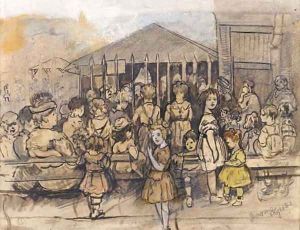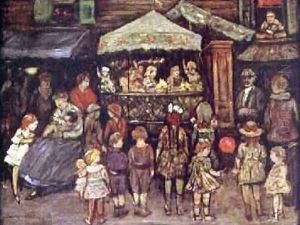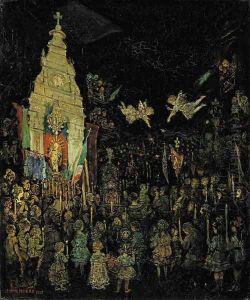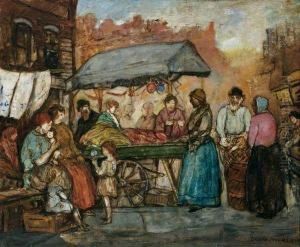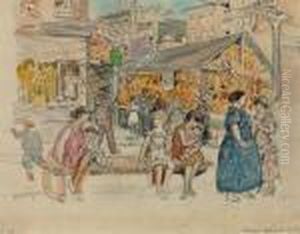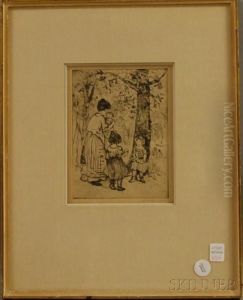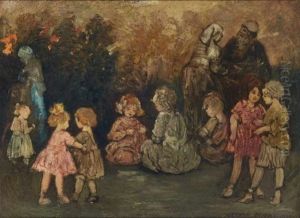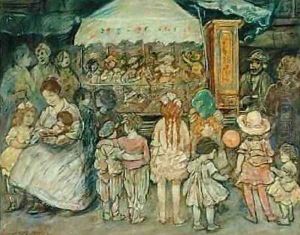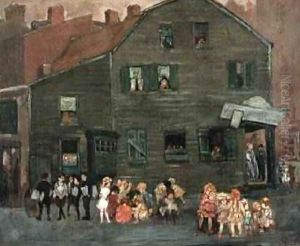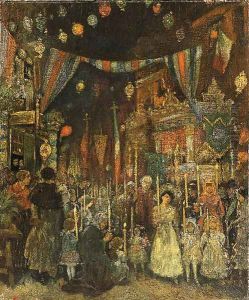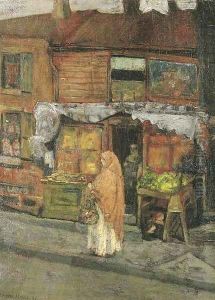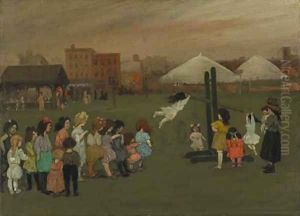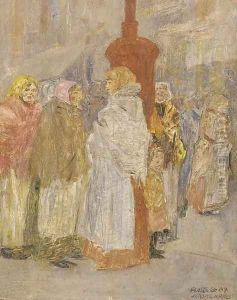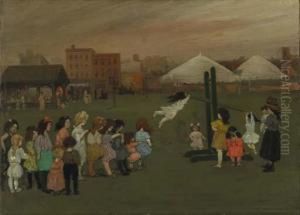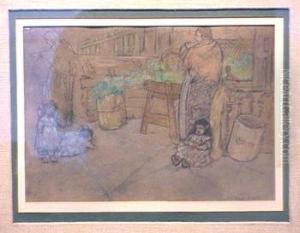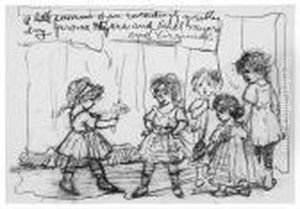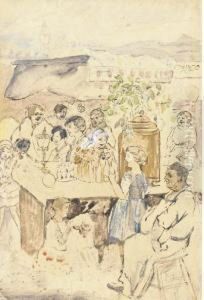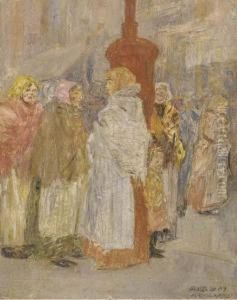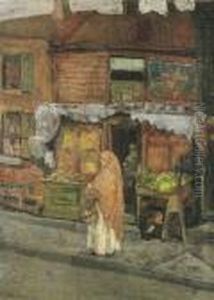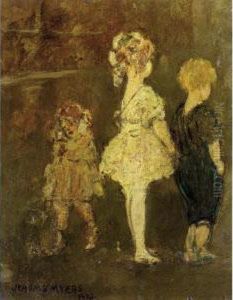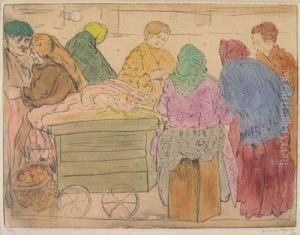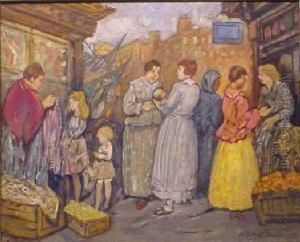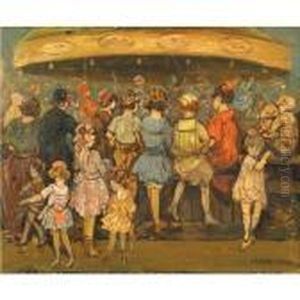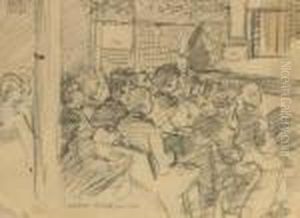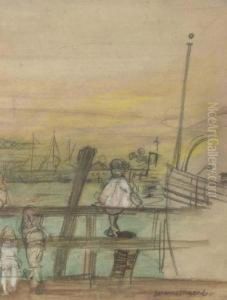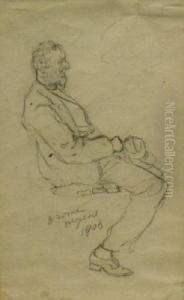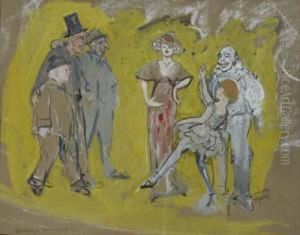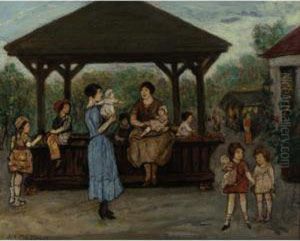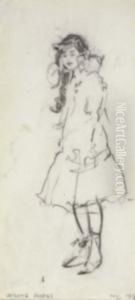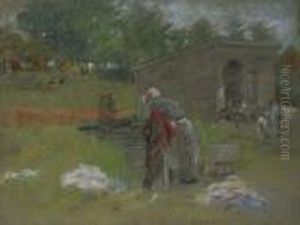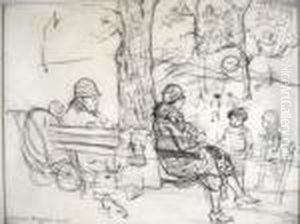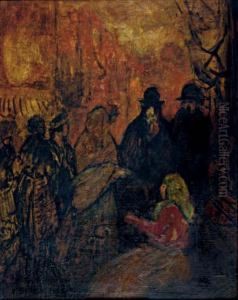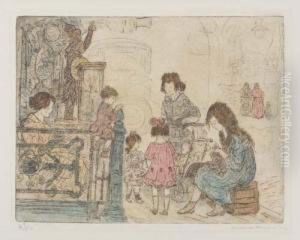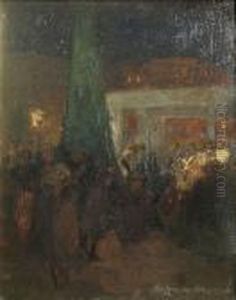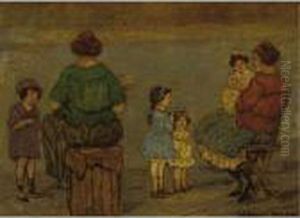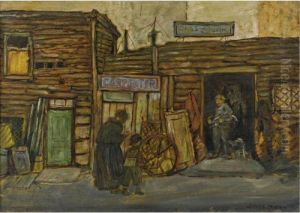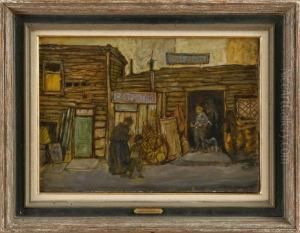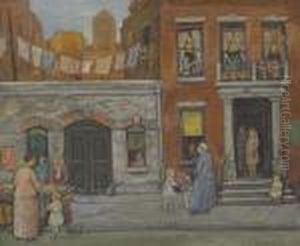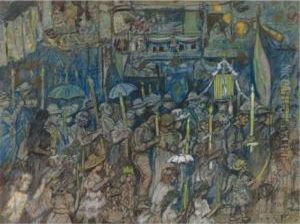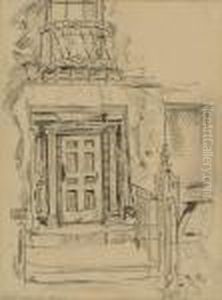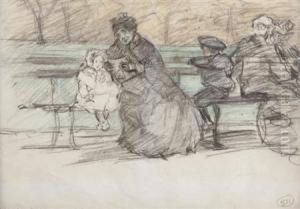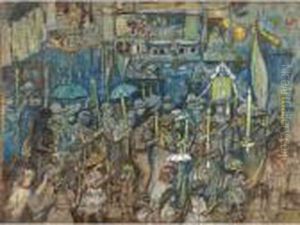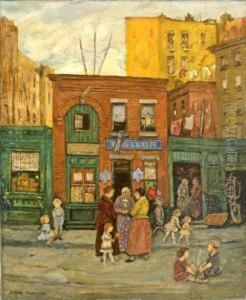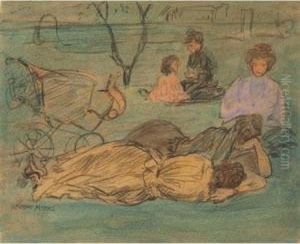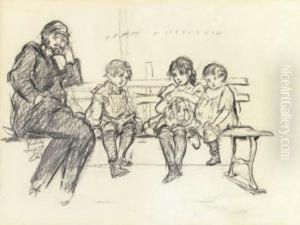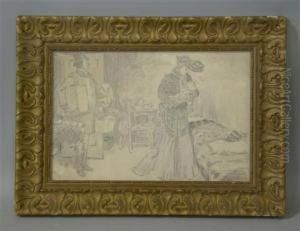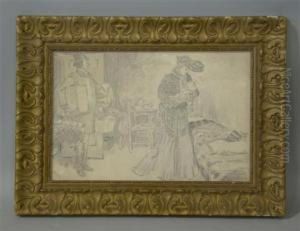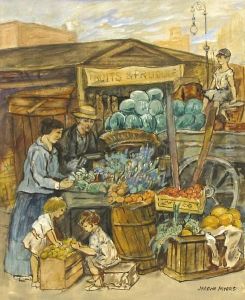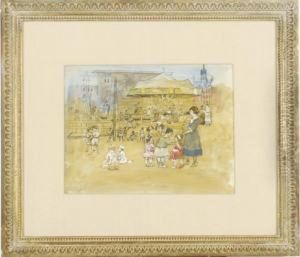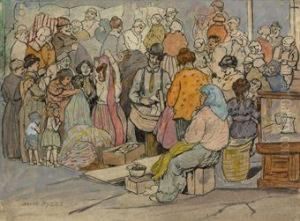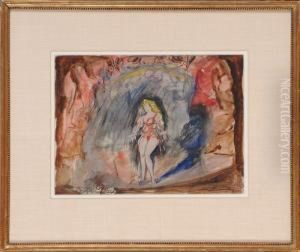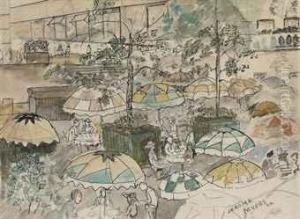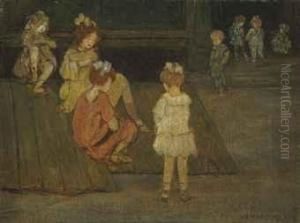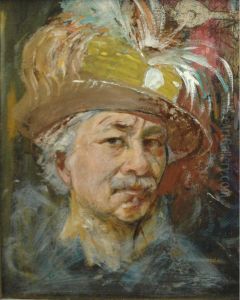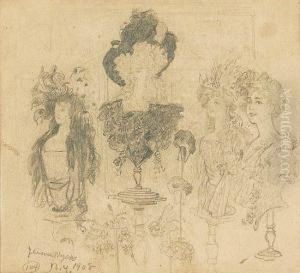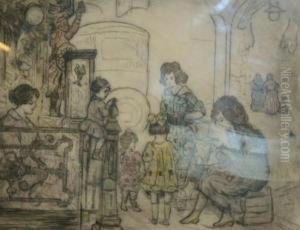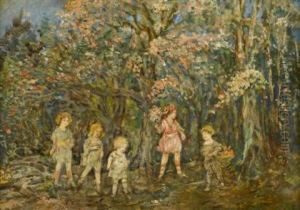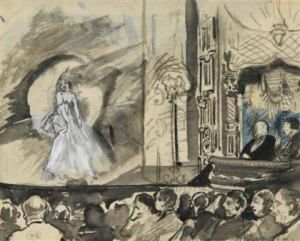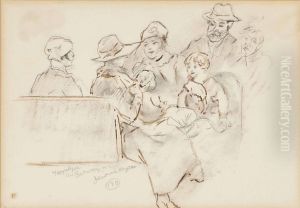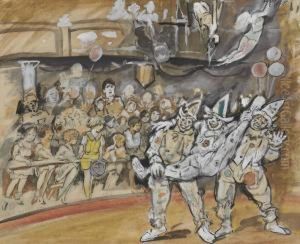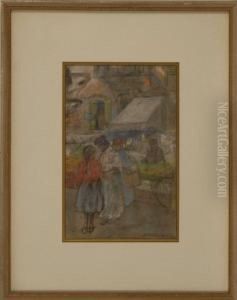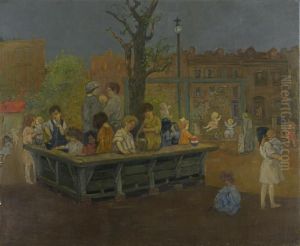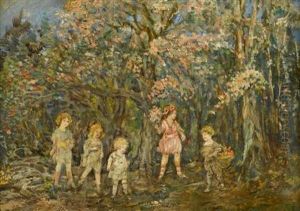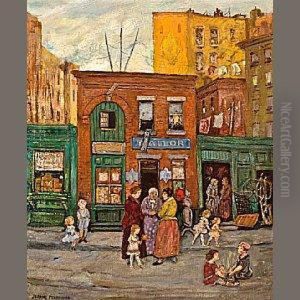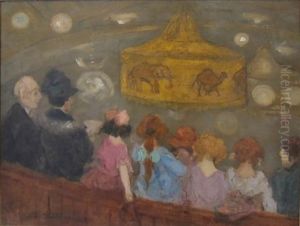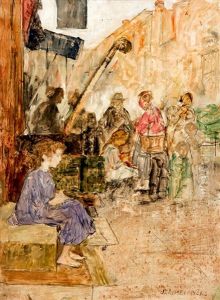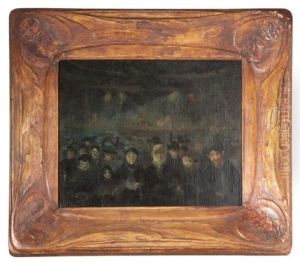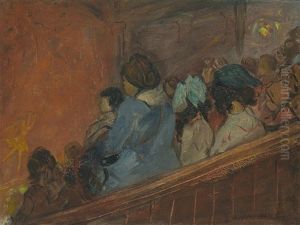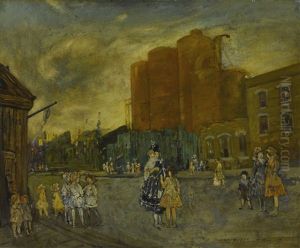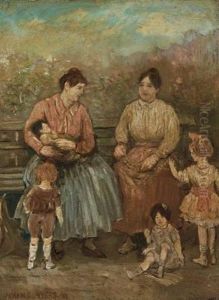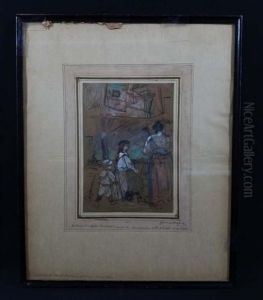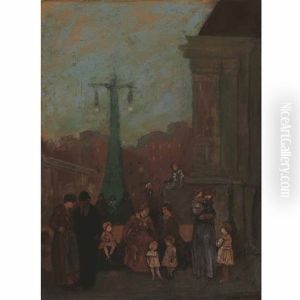Jerome Myers Paintings
Jerome Myers was an American painter and printmaker who was best known for his empathetic depictions of the urban landscape and the people of New York City's poorer neighborhoods, such as the Lower East Side and the Bowery. Born on March 20, 1867, in Petersburg, Virginia, Myers was largely self-taught as an artist, although he briefly attended classes at the Cooper Union in New York City, and later at the Art Students League.
Myers was drawn to the human element within the city, and he focused on the everyday lives of immigrants and the working class. Unlike the often gritty and stark representations of urban life by some of his contemporaries, Myers' work was characterized by a softer, more lyrical approach. His use of color and light often imbued his subjects with a sense of dignity and a gentle optimism, despite the harsh realities they faced.
In the early 20th century, Myers became involved with the Ashcan School, a group of artists who sought to portray the realities of life in New York through their art. However, Myers' style remained distinct from the darker and more visceral depictions of city life that became associated with the movement. Instead, he retained a more romantic vision of the urban environment.
Throughout his career, Jerome Myers exhibited his work at various venues, including the Pennsylvania Academy of the Fine Arts, the Corcoran Gallery of Art, and the National Academy of Design. He was also a founding member of the Society of Independent Artists, which was established as a rebellion against the restrictive exhibition practices of traditional institutions.
Despite his focus on urban subjects, Myers also created landscapes and was skilled in etching and lithography. His work was well received during his lifetime, and he enjoyed the support of patrons and the respect of his peers.
Jerome Myers continued to paint and exhibit his work until his death on July 6, 1940, in New York City. Today, his work is included in the collections of many major museums, and he is remembered for his unique contribution to the American art scene, capturing a compassionate and humanistic snapshot of New York City's vibrant, early 20th-century street life.
